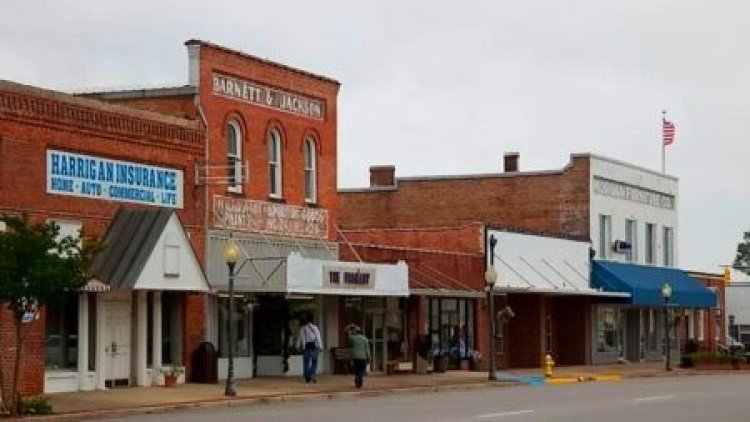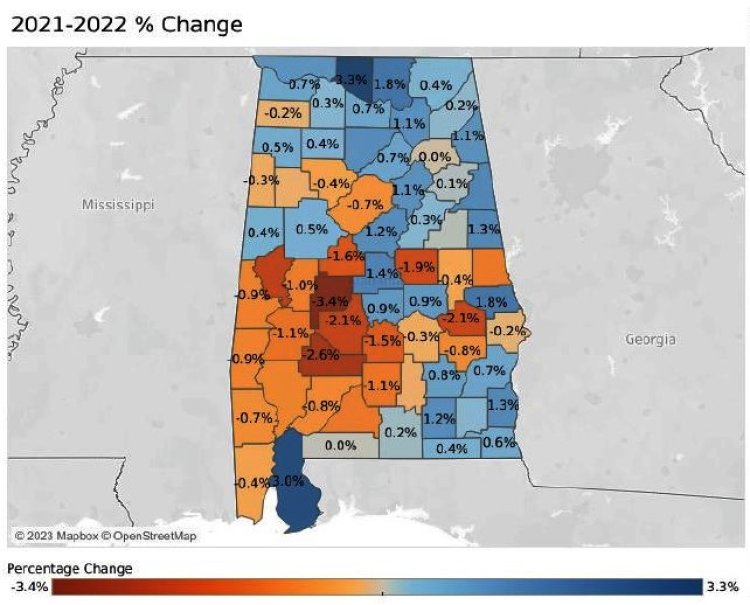7 Alabama Towns People Are Fleeing As Soon As Possible


{TheChronicle.cc} –Alabama, a state rich in history and natural beauty, faces significant challenges in several of its towns. Once thriving communities are now struggling, prompting many residents to seek opportunities elsewhere. Here’s a look at seven Alabama towns experiencing an exodus and the issues driving this trend.
1. Selma: A Legacy Overshadowed by Struggle
Selma, renowned for its pivotal role in the Civil Rights Movement, is now mired in economic hardship. With a poverty rate of 41.9%, one of the highest in the nation, and a median household income of just $23,283, many residents struggle to afford basic necessities. Public safety is also a concern, with a violent crime rate of 1,450 per 100,000 residents. Limited educational opportunities, reflected in a low graduation rate, compound these issues, leading to a 12.9% population decline from 2010 to 2019.
2. Anniston: A Faded Industrial Dream
Anniston’s decline is marked by deindustrialization and environmental issues. Once a bustling industrial hub, the town now suffers from factory closures and their aftermath. With a poverty rate of 31.7% and a median household income of $30,085, economic conditions are tough. A violent crime rate of 1,381 per 100,000 residents and environmental contamination further diminish Anniston's appeal. The town ranks last in quality of life among Alabama cities and has seen an 8.5% population decrease since 2010.
3. Bessemer: The Tarnished “Marvel City”
Bessemer, once known for its booming mining and manufacturing industries, now struggles with racial segregation, urban decay, and unemployment. The poverty rate stands at 29.9%, with a median household income of $31,308. The violent crime rate is alarmingly high at 2,986 per 100,000 residents, and educational attainment is low. Over the past decade, Bessemer’s population has decreased by 5.6%.
4. Prichard: From Prosperity to Peril
Prichard, a former desirable suburb of Mobile, has been plagued by mismanagement, corruption, and bankruptcy. With a poverty rate of 33.9% and a median household income of $24,883, financial stability is difficult for many. Safety is a major concern, with a violent crime rate of 1,026 per 100,000 residents. Prichard ranks poorly in livability, and its population has declined by 9.8% since 2010.
5. Fairfield: A Baseball Legend’s Hometown Loses its Swing
Fairfield, the birthplace of baseball legend Willie Mays, has been hit hard by the decline of the steel industry and the loss of major employers. The town faces crumbling infrastructure and dwindling services. The poverty rate is 35.8%, with a median household income of $28,590. Crime is a significant issue, with a violent crime rate of 2,014 per 100,000 residents, and educational outcomes are poor. Fairfield has experienced an 11.5% population decline over the past decade.
6. Lanett: A Textile Town Unraveling
Lanett, once a textile manufacturing hub, has suffered from mill closures and job losses. Economic decline has led to drug and crime problems, with a poverty rate of 30.4% and a median household income of $26,938. The violent crime rate is 1,274 per 100,000 residents, and the town ranks 226th in quality of life among Alabama cities. Lanett’s population has decreased by 7.9% in the last decade.
7. Tarrant: A Blighted Shadow of its Former Self
Tarrant, once a vibrant industrial and residential area, now contends with poverty, pollution, and blight. The town’s poverty rate is 28.6%, with a median household income of $31,250. The violent crime rate stands at 1,647 per 100,000 residents, and educational attainment is low. Tarrant has seen a 10.4% population decline since 2010.
A Glimmer of Hope: A Future Beyond Exodus
Despite these challenges, there is hope for revitalization. Investment in infrastructure, job creation, environmental improvements, and public safety are essential. Education reform and fostering community inclusivity can help rebuild these towns.
The Road to Recovery: A Shared Responsibility
The issues facing these Alabama towns reflect broader trends in struggling small communities across the U.S. Addressing these problems requires a collective effort from local governments, state and federal policymakers, and the private sector. Investing in these communities benefits not only the towns themselves but also the state and nation as a whole.
What You Can Do to Help:
- **Raise Awareness**: Share information about these towns and the importance of supporting revitalization efforts.
- **Support Initiatives**: Donate to organizations working on community development projects in Alabama or locally.
- **Advocate for Change**: Contact local representatives and voice concerns about the challenges facing small towns.
- **Invest in the Future**: Volunteer your skills or expertise to support these communities.
Conclusion: A Crossroads of Opportunity
The future of these Alabama towns depends on whether they can overcome current challenges and emerge stronger. This requires the efforts of policymakers, community leaders, and everyone who cares about the fate of small towns in America. By investing in these communities and fostering collaboration, we can create a brighter future for these towns and their residents.








